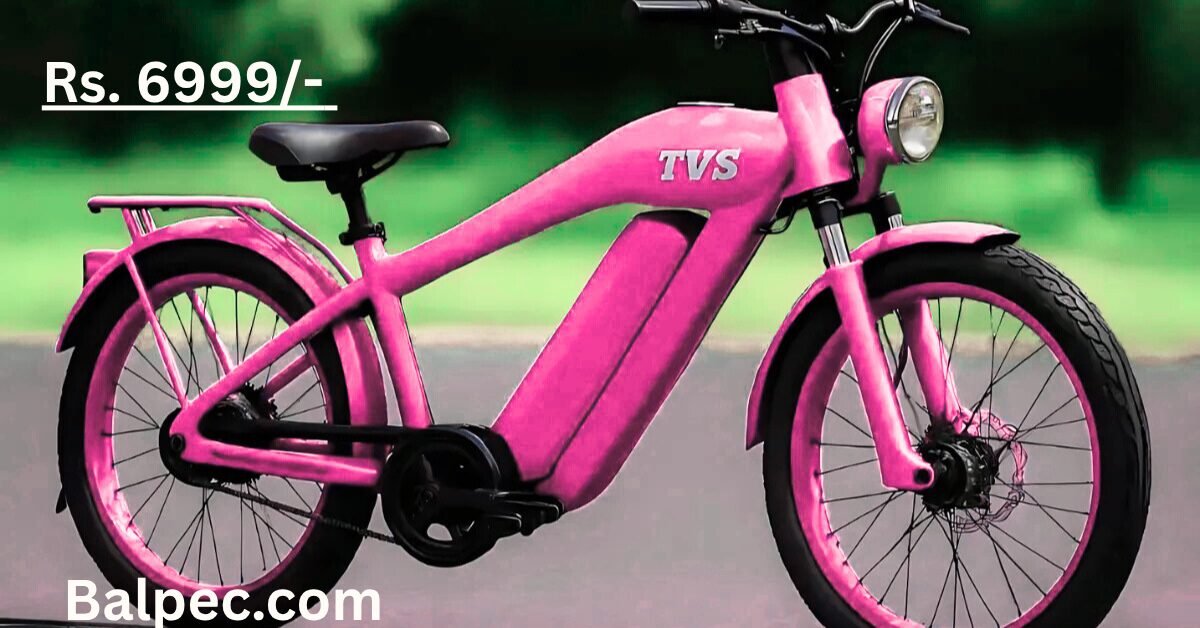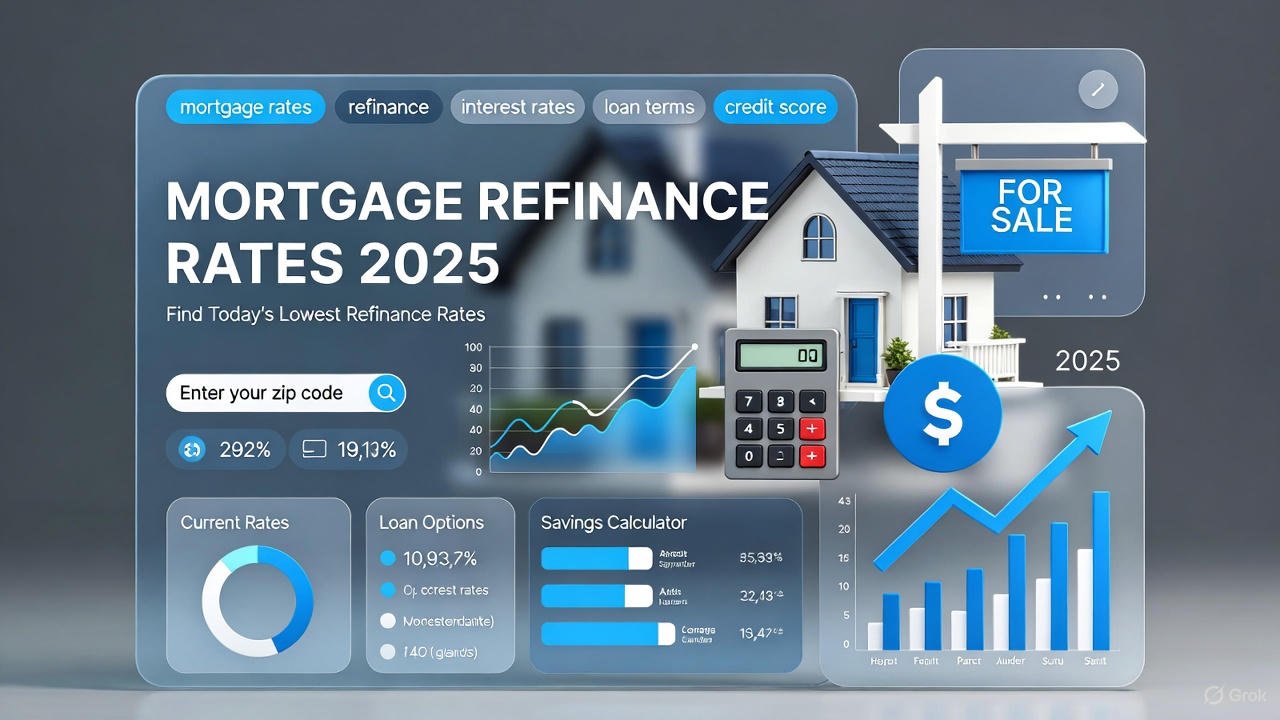TVS Electric Cycle 2025 – TVS has introduced the TVS Electric Cycle 2025, a budget-friendly electric cycle aimed at city commuters who want an efficient, low-cost alternative to petrol-powered short trips.
TVS quotes a 105 km range on a single charge; this is a claimed figure under likely pedal‑assist/eco conditions, so expect real‑world results to vary with rider weight, speed and terrain. The cycle’s top limited speed is 32 km/h, making it well suited to urban roads, school runs and daily commuting in towns and cities.
The model features what the company describes as ultra‑fast charging to reduce downtime between rides. Lightweight and stylish, the TVS Electric Cycle 2025 is positioned as a high‑value option for commuters and students who want modern design and low running costs without the higher price of an electric scooter like the TVS iQube series.
TVS Electric Cycle 2025
The TVS Electric Cycle 2025 adopts a clean, modern design that balances style with everyday practicality. Its frame is described as lightweight yet robust — ideal for typical Indian city roads — and the overall styling borrows cues from urban e-scooter aesthetics while keeping the compact footprint of an electric cycle.
Frame & weight: TVS markets the cycle as easy to handle in traffic and simple to manoeuvre and park; include the exact frame material (aluminium or steel) and kerb weight when available. Wheel options and stylish alloy rims are available, giving a sharper look and better durability compared with basic spoke wheels.
Comfort & ergonomics: The ergonomic saddle and adjustable handlebar posture are aimed at comfort for longer commutes. Seat height and suspension tuning should be confirmed for riders of different stature; the design intends to suit daily commuters, students and city riders seeking comfortable riding without the bulk of an e-scooter.
Display & lights: A neat digital display reports speed, battery level and distance covered; confirm whether the unit is an LCD or colour TFT. Integrated LED headlamp and tail‑light improve night visibility and add to the modern design language.
Practical features and accessory options — such as a carrier/rack, reflectors and anti‑theft provisions — make the cycle adaptable to different use cases. For buyers considering a larger e-scooter, the TVS iQube and iQube 2025 series offer more power and range but weigh more and cost significantly more; the Electric Cycle is positioned as an affordable, design‑forward option for urban mobility.
Engine & Mileage
Motor: The TVS Electric Cycle 2025 is reported to use a 250W BLDC motor delivering peak torque of 28 Nm and roughly 0.34 BHP (at 250 RPM as quoted). This motor rating is tuned for efficient urban performance — smooth acceleration from standstill and adequate hill‑climb ability for city gradients. Confirm these exact figures against the official specification sheet.
Battery & capacity: The article should state the battery chemistry (likely lithium‑ion), nominal voltage and battery capacity in Wh or Ah — essential data to corroborate the claimed range. Add the precise battery capacity when available; this number is key to assessing real-world range and charging time.
Range & test conditions: TVS quotes a 105 km range on a single charge. Note that this is a claimed figure and typically refers to economy/pedal‑assist conditions. Real‑world range will vary with rider weight, assist level, average speed and terrain — for example, expect lower figures (perhaps 60–80 km) when riding consistently at higher speeds or on hilly routes. Include a short note explaining the assumptions used for any range examples.
Performance & speed: The cycle’s top limited speed is 32 km/h, which aligns with urban commuting needs. For context, compare these numbers with TVS’s iQube line: the iQube 2025 and other tvs iqube models typically have higher motor power and larger battery capacity, offering greater top speed and longer range but at higher weight and cost.
Practical copy additions: once official battery capacity and charging time are confirmed, add a short “real‑world use” callout (e.g., “If your daily round trip is 20 km, a full charge should last 4–5 working days in mixed city conditions”). This helps commuters estimate distance and charging frequency.
Features
Charging & battery: TVS describes the model as having ultra‑fast charging — the article should quote the charger output (A/V or kW) and exact times (for example 0–80% and 0–100%) once those figures are available. Include the battery chemistry (likely Li‑ion) and the battery capacity in Wh or Ah to make the claimed range credible. Clear charging figures help commuters plan daily use and compare with electric scooters.
Dashboard & connectivity: A digital display shows speed, battery level and distance covered; please confirm whether this is an LCD or a colour TFT and if it supports Bluetooth connectivity, smartphone app pairing, trip logging or navigation. These technology features improve the daily commuting experience and bring the cycle closer to the feature set of modern e-scooters.
Safety & brakes: Safety highlights reportedly include LED lights, reflective strips and anti‑theft options. Verify brake type (disc or drum, front/rear) and any regenerative braking or ABS‑style systems — concrete braking specs are essential for confident city riding.
Comfort & suspension: The cycle pairs a lightweight, durable frame with a comfort‑tuned suspension and ergonomic saddle for longer rides. Confirm suspension travel (mm) and seat adjustability; these numbers matter to riders comparing comfort with heavier electric scooters like the TVS iQube.
Anti‑theft & accessories: Reported anti‑theft provisions should be specified (mechanical locks, immobiliser, GPS tracking or app‑based alerts). Also list common accessory options — carrier/rack, mudguards, and additional reflectors — so urban riders can tailor the cycle for commuting or errands.
Practical note for editors: add a short “What’s new vs TVS iQube/iQube 2025” bullet list and confirm each feature with official specs. Where possible, include display screenshots, charger images and a fast‑charging time comparison to electric scooters to give readers a clear view of the product’s technology and value.
Price & EMI
Listed at an introductory price of ₹6,999, the TVS Electric Cycle 2025 is pitched as an extremely affordable entry into electric mobility for city riders. Confirm whether this is the official manufacturer price or a launch offer, and whether it includes GST, accessories or delivery charges — the on‑road price may differ.
EMI example: TVS is reportedly offering EMI plans starting from around ₹699 per month. Clarify typical terms (tenure options such as 6, 12 or 24 months, interest rate and any down payment). For transparency, show at least one worked example: e.g., “If financed over 12 months at X% APR, monthly EMI would be approx. ₹YYY — confirm with the finance partner.”
Value & running cost: The low price combined with cheap charging makes the cycle a strong value proposition for students, commuters and eco‑aware riders. As a quick example, if your daily round trip is 20 km and the cycle achieves an average energy cost of Z paise per km, the monthly electricity cost will be substantially lower than the equivalent fuel expense for a petrol scooter — include local electricity tariffs to compute exact savings.
Practical notes for editors: list any government subsidies, dealer discounts, trade‑in offers or service packages that affect the effective price. Also add a short CTA line such as “Check dealer availability and exact on‑road price” with a link to the TVS dealer locator once you confirm the official pricing details. For buyers considering more power and range, compare the price and features with the TVS iQube / iQube 2025 to show the trade‑off between cost and capability.
Frequently Asked Questions (FAQ)
- Q: What is the real-world range of the TVS Electric Cycle 2025?
- A: The claimed range is 105 km on a single charge under economy/pedal‑assist conditions. Real‑world range depends on rider weight, assist level, average speed and terrain; expect roughly 60–80 km in higher‑speed or hilly use. (Note: include official battery capacity and test method when available.)
- Q: How long does the battery take to charge?
- A: TVS describes the model as having ultra‑fast charging. Confirm the exact charging times (for example 0–80% and 0–100%) and the charger output (A/V or kW) from the official spec sheet to provide precise figures.
- Q: Is this an e‑scooter or an electric cycle?
- A: It is marketed as an electric cycle with pedal‑assist and a motor limited to 32 km/h. Local vehicle classification and regulations may vary, so check regional rules for e‑scooter/e‑cycle categorisation and any licensing requirements.
- Q: How does the TVS Electric Cycle 2025 compare to the TVS iQube / iQube 2025?
- A: The iQube series are full electric scooters with larger motors and batteries, giving higher top speed, longer range and faster acceleration but at higher weight and price. The Electric Cycle aims for lower cost, lighter weight and better value for short urban trips. Add a spec comparison table when exact battery and motor numbers for both models are confirmed.
- Q: What battery and battery capacity does it use, and what is battery life?
- A: The product likely uses a lithium‑ion battery — include the exact battery capacity (Wh/Ah) and warranty details from TVS. Battery life depends on usage patterns and charging habits; confirm manufacturer warranty and replacement costs.
- Q: Are there EMI and finance options?
- A: EMI plans are reported to start from around ₹699 per month. Exact EMI amounts depend on tenure, interest rate and any down payment — verify current finance partner offers and terms at the time of purchase.
- Q: What safety features and anti‑theft options are included?
- A: The cycle includes LED lights, reflective strips and reported anti‑theft options; specify whether anti‑theft is mechanical, GPS‑based or app‑integrated after checking official feature list. Also confirm brake type and any additional safety certifications.
- Q: Is the cycle suitable for daily urban mobility and commuting?
- A: Yes — designed primarily for urban mobility and daily commuting. If your daily distance is modest (eg 10–25 km round trip), the cycle should cover multiple days between charges; include energy cost comparisons vs petrol scooters to illustrate value.
Final Thoughts- TVS Electric Cycle 2025
The TVS Electric Cycle 2025 presents strong value for city riders: an eye‑catching design, low price and the claimed long range make it an attractive option for short‑distance commuting. For many students and office commuters, the combination of low running cost and compact form factor will be the primary draw.
Balanced view: strengths include the modern design, affordability and easy urban riding at a top speed suited to city roads. Potential limitations to note are the motor and battery capacity compared with full electric scooters, warranty and replacement costs for the battery, and the fact that a 32 km/h top speed and pedal‑assist orientation make it best for city use rather than longer highway journeys.
Who should buy this? City commuters, campus riders and budget‑conscious buyers who prioritise low running costs and easy parking. Who should consider a scooter (eg TVS iQube/iQube 2025)? Those who need higher top speed, more power and longer distance between charges should look at TVS’s scooter range.
Final recommendation: confirm the official battery capacity, charging times and on‑road price before purchasing. If the confirmed specs match the claims, the TVS Electric Cycle 2025 could be a practical, future‑facing mobility solution for many city riders — offering savings over petrol for everyday trips. For the latest prices and to book a test ride, check your local TVS dealer or the official TVS website.













